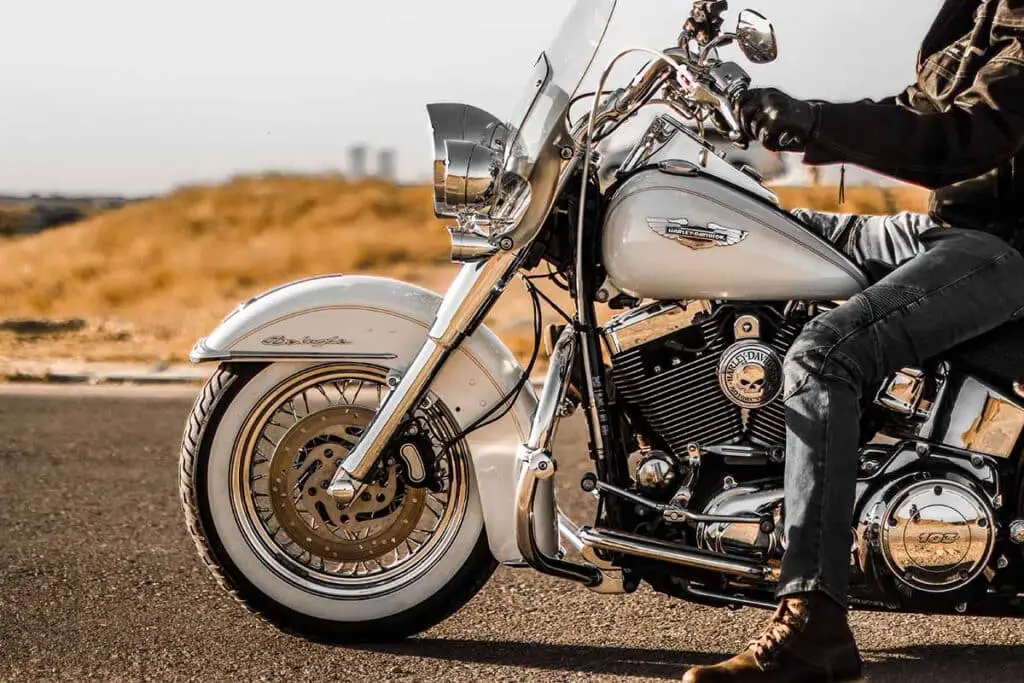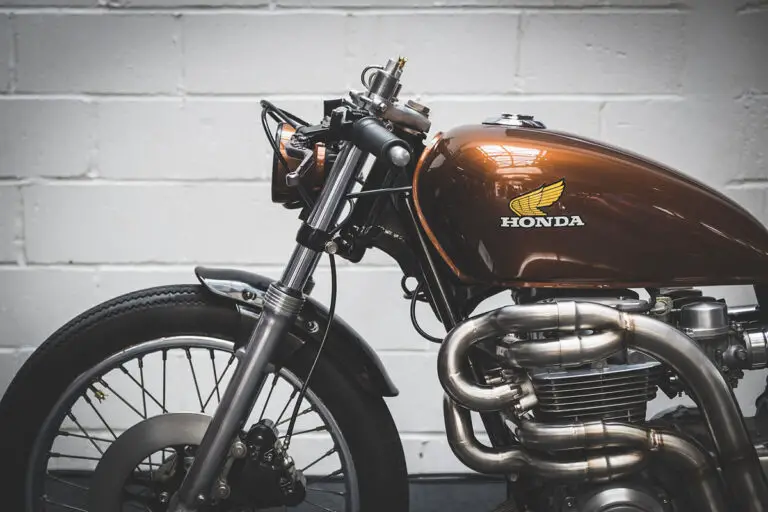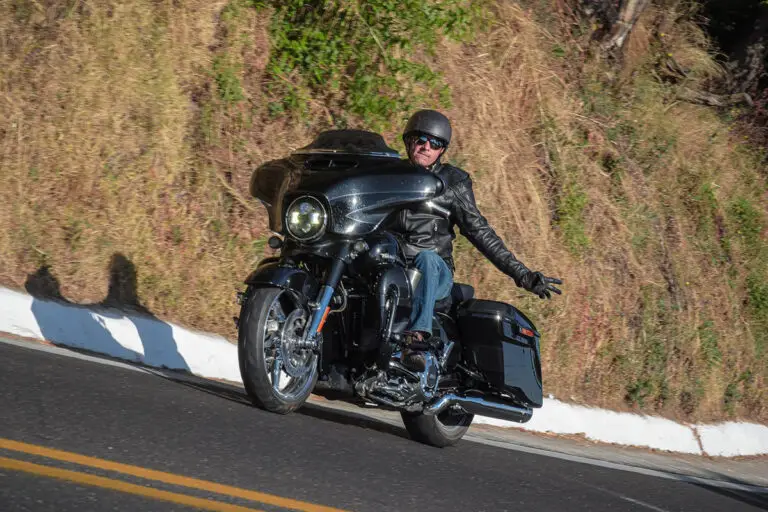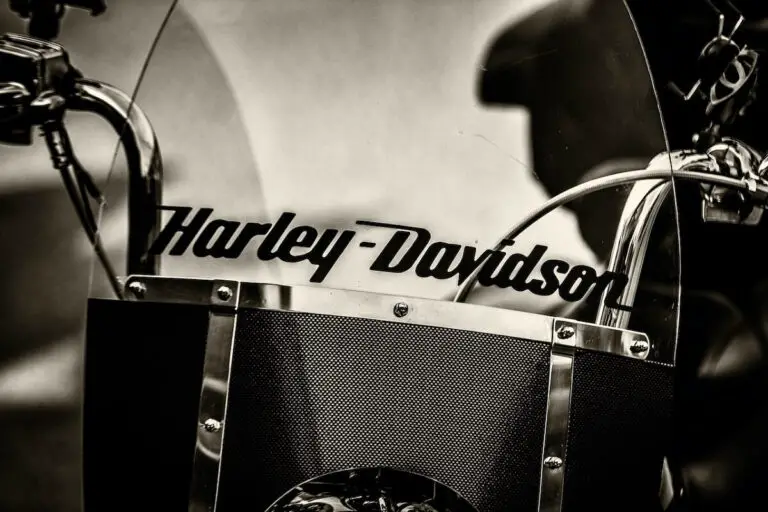What Is Heel Toe Shifting on a Motorcycle?
Disclosure: We may get commissions for purchases made through links in this post.
Picture this — you are cruising at 50 mph and need to make a turn to get to your destination. You shift to 2nd gear as you turn right, preventing your RPMs from going into near-idle. You then come out of that corner and easily get back to cruising speed without a hiccup. All this is made possible through heel toe shifting.
Heel toe shifting (a.k.a. heel-shifting) is a technique that utilizes a rider’s heel instead of toes and is usually done when making a turn. It is executed in a downward fashion, with the ball of the foot pressing on the forward or rear shift lever to either shift up or downshift.
In this guide, we will delve not only into the purpose of heel-toe shifting but also its history and benefits. Furthermore, we will cover how it differs from double clutching, another advanced shifting technique.
Wondering whether or not to employ heel-toe shifting? Continue reading to find out.

What Is Heel and Toe Shifting?
To effectively answer the question, “What is heel toe shifting?” let me start by saying that it is both a feature of and a technique used in riding motorcycles.
As a feature, a heel toe shifter consists of two shift levers conjoined in a V-like shape and placed a tad higher than the left footpeg (view on Amazon) on motorbikes with floorboards. Contrary to traditional toe shifters, heel toe shifters are situated as such to compensate for the presence of floorboards, which gives riders less room to lean into a bend or turn.
Mechanism-wise, it operates like a see-saw where the heel is used to engage the clutch and the toe to release it (hence, the name). With this layout, riders perform gearshifting by stomping downward with the ball of their left foot, putting less stress on the ankle.
History
Per research done by RevZilla, the heel toe shifter for Harley Davidson motorcycles first became a thing in 1915 — when the OEM equipped its two-wheeled offerings with a 3-speed gearbox. Because of this change, the former tensioning lever of these bikes turned into a gear selector lever with an ‘over center’ design, permitting the clutch pedal to stay “where it is left in its travel.”
The Harley Davidson heel toe shifter concept was later produced from the factory and introduced in the American firm’s K and Big Twin series, with some insights reportedly taken from aftermarket outfitters supplying the B&H Footshift (similar to HD’s mousetrap-looking ‘clutch booster’), Thoro Speed Shift (similar to HD’s version of the ‘ratchet lid’), and Speed-E-Shift units.
Double Clutching vs. Heel Toe Shifting
Though it may be insignificant for motorcycle savants, I’ll expound on the difference between these two for the sake of those less experienced currently reading this guide. Because as incredulous as it sounds, many riders still tend to confuse double clutching with matching revs.
Double clutching in itself is not entirely impossible to do on a two-wheeler. In fact, the perfect window for doing so is between 1st and 2nd gear. However, it would not make much sense to do this since there is no neutral between the gears of a bike — a requirement of sorts when it comes to double clutching.
Double clutching is mainly used with an unsynchronized manual transmission. This method involves pushing the clutch in, engaging the transmission in neutral, and shifting to the preferred gear. ‘Neutral’ being a requisite, it simply would not work the same way on motorcycles as opposed to four-wheelers.
However, this is not to say that heel-toe shifting is a maneuver exclusive to bikes. Unlike double clutching, the said technique can be applied to vehicles and calls for a slightly more complex set of steps when done on the latter.
The slick method entails using one’s right foot to manipulate both the brake and accelerator pedals (view on Amazon) while the left foot fully depresses the clutch.
Benefits of Doing Heel Toe Shifting
Although heel-toe shifting is one skill to have in motorsports, it is largely unnecessitated in modern bikes used for daily driving. Still, being able to execute this fancy footwork (especially when approaching an intersection) does come with the following benefits:
- An easier downward motion using the ball of one’s foot — especially for riders with disabilities or limited ankle mobility
- Balanced motorcycle weight when changing gears
- Riding boots are kept in pristine condition longer since there is no surface scarring.
- More efficient and seamless acceleration around corners
- Prevention of wheel lock
- Reduced stress on the transmission
The 6th bullet point is, perhaps, the most advantageous of the lot, and here is why.
Each time we apply the brakes when approaching a corner, our motorcycle’s engine speed drops as it slows down. This is to be expected, although it makes coming out of the corner troublesome.
Typically, drivers compensate for this reduced speed by shifting into a lower gear. However, the action is counter-intuitive as it only exacerbates RPM decline and practically puts the power mill on idle.
The eventual clutch release also puts pressure on the engine to work twice as hard while catching up with the rest of the motorbike.
By using a toe and heel shifter, inefficiency is greatly reduced since engine speed is made to match road speed. This maneuver does require some practice (more so if you have not done it before), but the result is optimal power sustained through gear changes.
How to Do a Heel Toe Shift
There are two ways to do this technique, depending on what direction you want to rotate your motorcycle’s shift shaft.
Downshifting
You need only press down on the forward shift lever of the heel-toe shifter with the ball of your left foot. After which, release the shift lever to reset the clutch for the next gearshift. Between motorcycles equipped with a heel toe shifter and those with a standard toe shifter, shifting into a lower gear is done similarly.
Upshifting
The reverse of the above steps is true when shifting up. Instead of the forward shift lever, press down on the rear shift lever with your heel to shift into the next higher gear. Undoing the clutch in preparation for the next gearshift is performed the same way — by doing a heel-to-toe technique to release the rear shift lever.
In this scenario, there is a huge difference in shifter layout and execution between standard motorcycles and those with floorboards like Thrashin Supply Bagger Floorboards (view on Amazon). The upshifting method I just described only applies to the latter. With standard motorcycles, you need to place your left foot under the lever and prop it upward with your toe to upshift.
When to Use a Heel Toe Shifter
Around Corners and Intersections
Heel toe shifting is highly recommended for seamless driving when turning in and coming out of a bend. After all, its main objective is to reduce the stress placed on the motorbike’s transmission by matching road speed with engine RPMs.
During Stop-And-Go Traffic
Depending on what you have been accustomed to, you may or may not find heel toe shifting an advantage when driving in city traffic. Nonetheless, many riders agree that utilizing a heel toe shifter like Arlen Ness 10-Gauge Black Heel/Toe Shifter 40-107 (view on Amazon) feels more natural and less taxing, more so when squeezing through congested traffic and into tight corners.
Switching From a Sportbike to a Cruiser
With this scenario, heel-toe shifting is more of a given than a choice. Though not all, most modern cruisers or touring models come with floorboards and heel-toe shifters.
Of course, you can always purchase a conversion kit if you want the traditional toe-shifter layout. Otherwise, you will have to learn how to use the feature.
Making Less Aggressive Turns
I have yet to come across feedback on motorcycle-dedicated forums where a rider deliberately did this. However, using a heel toe shifter will perfectly fit this situation.
I would imagine whoever does this would be someone attempting to unlearn a perilous habit or changing motorcycle preferences after several years.
Nerve Fatigue
It is on a case-to-case basis, really. Nonetheless, heel-toe shifting is more likely to help riders with this impediment as the maneuver reduces stress on the ankle.
Depending on how weakened one’s nerve response is, a downward motion using the heel may prove less challenging than pushing the shift lever up using one’s toes.
Preserving Your Shoes Longer
Admittedly, I included this for laughs. However, some riders might actually have this as their reason. Footwear is definitely cheaper than most aftermarket parts. But in all honesty, no one wants to be caught dead riding a Big Twin with scuffed boots!
Disadvantages of Heel Toe Shifting
For the most part, the downsides of the heel toe shifter mechanism only become apparent to motorheads who have manipulated nothing but traditional toe shifters. I can only imagine how difficult (not to mention awkward) it would be to convert the toe-involving maneuver into one that uses the ball of your foot.
That said, it is expected that riders switching from a standard to a floorboard-equipped motorcycle still apply the toe shifter technique during their first few attempts of changing gears.
Once they do, they will realize the disadvantage — that there is little space between the underside of the forward shift lever and the floorboard to place the left foot. This limitation makes it impossible to upshift the forward shift lever using their toes, even if they had slim feet.
Restrictive
Riding on this point, some motorheads accustomed to pivoting off their heel to manipulate their bike’s foot controls find the heel-toe shifter restrictive. For these folks, the shifter layout does get in the way, especially when moving the ball of their foot backward on the floorboards.
In contrast to one of the benefits I stated earlier, some riders with disabilities find the mechanism of the heel toe shifter inconvenient. Impaired nerve response makes it challenging to execute a downward motion using one’s heel instead of clicking up the toe-shift lever (which feels more natural).
Another pitfall of heel toe shifting is that it is painful to do it on a standard two-wheeler with no floorboards. For the average consumer, this translates to additional expenses as the rider would have to retrofit the motorcycle with a floorboard and a heel toe shifter (or an extended one) to boot.
The same can be said for motorcycles factory-built with heel-toe shifters and floorboards. The contraption is not exactly a one-size-fits-all shifter — but nothing that a heel toe shifter extension cannot fix.
Conclusion – What Is Heel Toe Shifting on a Motorcycle?
Shifting mechanisms have come a long way since the 1920s. With the evolution of gearboxes from tensioned pulleys to 6-speed transmissions and the prevalence of performance tourers and cruisers, shifter layouts are bound to morph into more user-friendly, efficient systems. Such is the case with heel toe shifting.
I hope the information shared in this guide helped shed light on this slightly obscure motorcycling terminology. Additionally, may it lead to a better appreciation of this groundbreaking but often-overlooked feature.







